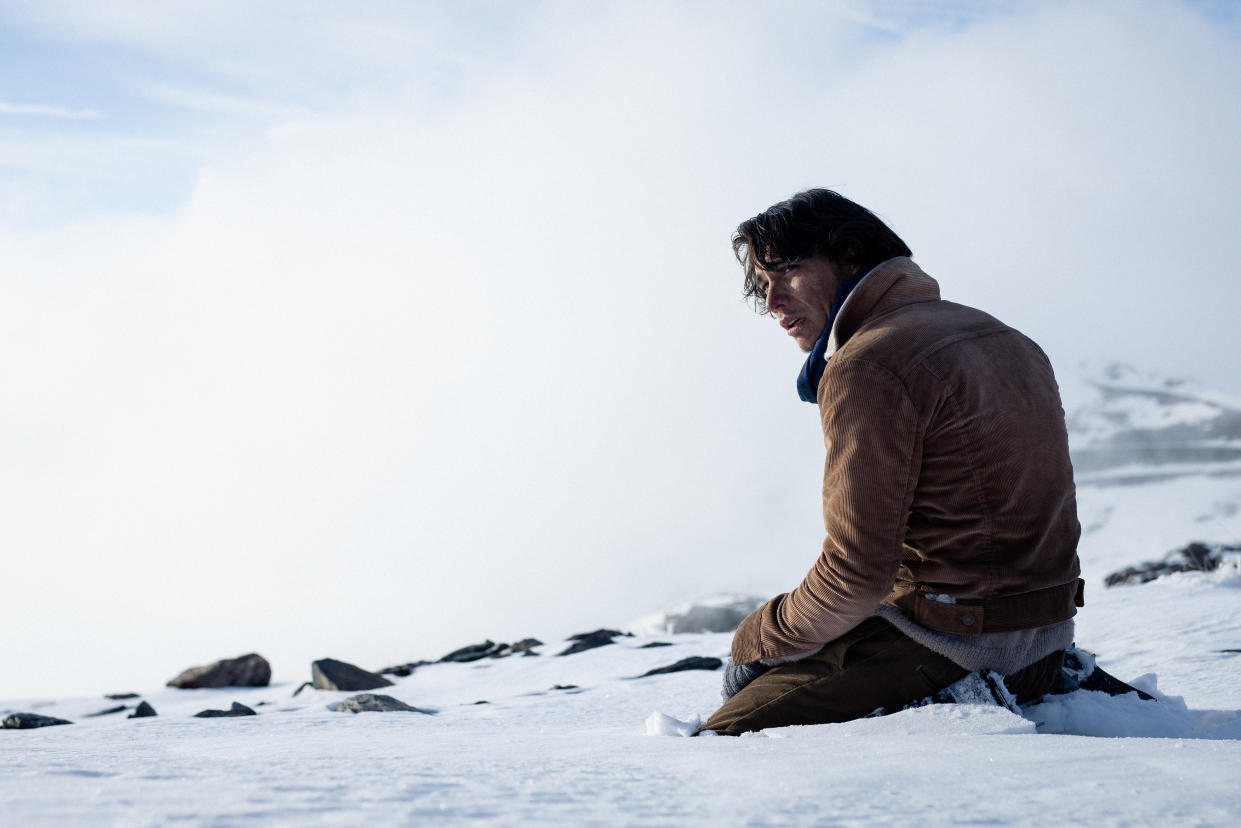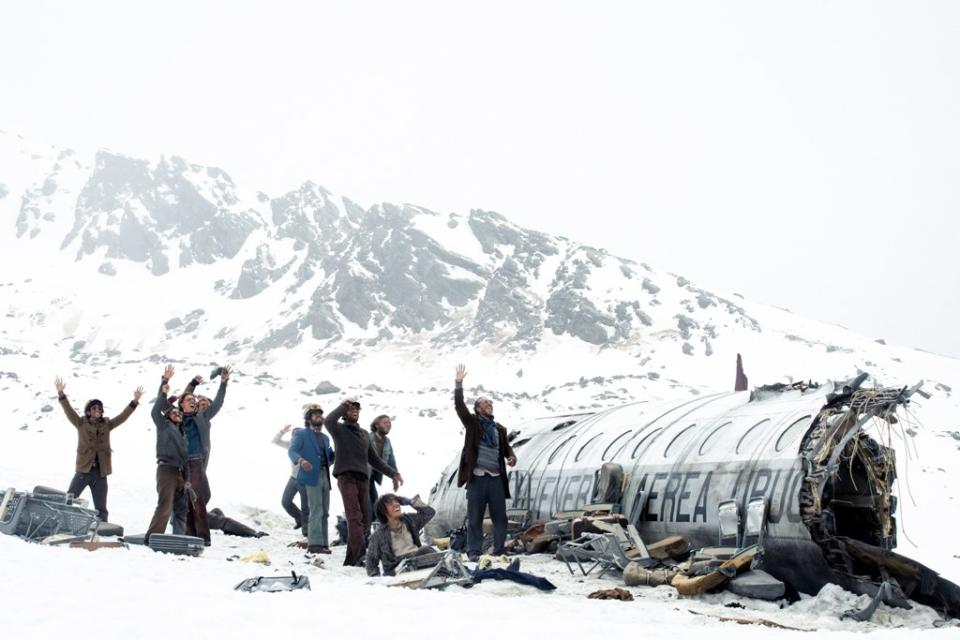How J.A. Bayona’s Uruguayan Plane Crash Drama ‘Society of the Snow’ Honors the Dead


It was freezing cold. The altitude was 11,000 feet. There was the occasional avalanche. No cranes. No dollies. But by getting as close to the Andes’ Valley of Tears as possible, the site of the 1972 Uruguayan rugby team’s infamous crash, Spanish filmmaker J.A. Bayona (“The Impossible”), his producing partner Belén Atienza, and their cast and crew brought the dead back to life. Sixteen survivors walked away from that crash after 72 days. 42 died.
The Spanish entry for the Oscars, “The Society of the Snow” (December 22, Netflix), is about the contract the living made: They offered their bodies to keep their friends alive after their deaths.
More from IndieWire
“The people in the plane, the people who went through that story, were offering their bodies to their friends, in case they need them,” said Bayona. “And in that idea, there is something transcendent because it’s this unconscious realization that you and I are the same thing. That if you live, I live. And I thought how interesting it would be to tell a tale that starts with one character. And this character gives the chance to the other people to finish the story. And you create a visual metaphor or a narrative metaphor, where the character is allowed to leave and to get to the end, thanks to his friends, and his friends are able to get there thanks to him, which is basically what the essence of the story is about.”
Thus “The Society of the Snow,” based on Pablo Vierci’s 2016 interviews with the 16 survivors, “I Had to Survive,” has a spiritual dimension that was never forgotten by the filmmakers. That’s why Bayona felt that he had to travel up to the Andes location of the plane crash (which he recreates in the movie in bone-crunching detai), Valley of Tears.
One reason it took so long to make the film was that Bayona wanted to shoot in Spanish, with Uruguayan accents. Given that, and the expense of shooting in the mountains, the $70-million budget was tough to raise independently. The only reason it got made: Netflix saved the day.
The filmmakers could have made the movie in English at any time. (Frank Marshall’s “Alive,” based on the Piers Paul Reid bestseller, was released in 1993.) “It was important to be as close to reality as possible,” said Bayona. “It was also important to have a cast that will speak using their accents, an unknown cast, because the more unknown the faces were, the more realistic the approach will be.”

In the end, while the movie took ten years to fully realize, Bayona believes that all his experience shooting big-budget Hollywood fare like “Jurassic World: Fallen Kingdom” and the first two episodes of Amazon’s “The Lord of the Rings: The Rings of Power” helped him to make “The Society of the Snow.” “We thought we were going to be shooting this much sooner,” he said. “But this is the journey. And what we shot in Hollywood allowed us to to be shooting ‘Society of the Snow’ the way we wanted to do it.”
“It came in the right moment,” said Atienza. “Because J.A. had done two big Hollywood projects, with everything that means, dealing with huge machinery, having to shoot in a different way in something that is not your own language. [‘The Lord of the Rings’] was a gigantic universe. The energy was the correct one, to approach something this challenging in Spanish after doing these two massive Hollywood projects.”
“I enjoyed working on the designing of that world,” said Bayona. “I thought it was going to be only nine months. And it was finally a year and a half because of COVID. But that also gave me time to keep developing the script for ‘Society of the Snow,’ so I’m glad how things finally went. Because I got the experience. And I felt more prepared for this film after all that I went through.”

Right before production began in New Zealand in February 2020 on “The Lord of the Rings,” Bayona and Atienza had a decision to make. The fall survivors weren’t getting any younger. And they wanted their story to be told. After renewing options three times, finally, the filmmakers had to put their own money into acquiring the film rights outright. “So we went for it,” said Atienza. “And, thank god, Netflix came to the rescue. They immediately were receptive with the story and J.A. and so we went with them.”
They needed Netflix because they were making an expensive movie. “The logistics were insane,” said Atienza. In Spain’s Sierra Nevada, they shut down a ski resort and had to pay for the hotel. “The Andes were super expensive, bringing a film crew to the Valley of the Tears, which is completely insane. We worked twice in Valley of the Tears. And another 10 more days on the other side of the Valley of the Tears.”
At the beginning of the production, “everyone was freaking out,” said Atenzia, “because we had to fly the director on a helicopter and put him at [11,700 feet] altitude, like crazy. So he went there to get the taste of the place and to basically shoot all the plates.” It took Bayona three days to get there because he had “to get used to the altitude,” he said. “There were avalanches. It was a dangerous place. The first night I went to sleep. And when I woke up my bottle of water was a piece of ice. At that altitude, for example, the drones with the big cameras couldn’t fly, because of the lack of oxygen in the air. So we had to use the smaller drones. We were using just small cameras.”
Bayona also brought some actors up there. “That shoot was supposed to be for backgrounds and the VFX,” said Atienza. “We don’t have 3D mountains. We ended up shooting with the actors. And as usual, after shooting the day after there was an avalanche. And so it was tricky and very expensive.”
After that, on the first week of the shoot, almost all the actors and the director came down with COVID. So doubles had to step in.
The main production took place at 10,000 feet above a Sierra Nevada ski resort. “We were providing the actors with something similar in the snow,” said Bayona. “It was cold. It was inaccessible. So they experienced a bit of that. And at the same time, we were able to bring a whole camera crew in there.”
The filmmakers transformed that area into their own film studio and would ferry the cast and crew up the mountain for the half-hour trek on three ski resort Panthers. There was the fuselage at 10,000 feet for exterior shots with snow and wind. There was also a portable stage from Belgium for shooting the interior shots, a second fuselage. “Then we had a third fuselage also for exterior shots,” said Atienza. “We would use that in case shooting up there at 10,000 feet was not possible because of the weather. The worst was not knowing what we were going to shoot the day after. Because every day, we will have to look at the forecast.”
Throughout the shoot, the actors were dieting. They started out with some extra pounds when they first got out of the plane. By the end, when you see them taking a shower, “you were able to see their bodies,” said Bayona. “They lost more than 20 kilos some of them. The kids were super motivated. I found out that once we finished the day, they escaped to the gym to continue training to lose more weight.”
Bayona and cinematographer Pedro Lucas developed an improvisatory, documentary style of shooting their sprawling cast of 25 actors. “The actors knew a lot about the story, they were prepared,” said Bayona. “It was visceral. So there was no plan or dogma, we threw all the storyboards apart because it was impossible to bring a crane or impossible to bring a dolly. And sometimes it was impossible to place the camera on set, when we were shooting the avalanche. We’re in a limited space with 19 actors, eight corpses, and a camera crew. So there was no space to move the camera there. At a certain moment, I came up with this idea of using Periscope that you use to shoot commercials of food, and you’re able to put the camera very close to the eyes and to the food. I discovered that using those lenses, everyone was in focus. Suddenly, I wanted to be close to the faces of the actors and have all the faces of the actors in focus. Because that moment is the worst moment in the story, where the society of the snow was born. Everyone is the same. Everyone is as important as the other ones.”
One morning the cast and crew woke up to find an orange world. “There was this wind from the Sahara, dragging sand,” said Bayona. “Suddenly, everything looked orange. And we couldn’t shoot there. You need to put your mind in a different position because the mountain rules the situation all the time, and you need to be ready to react.”
At filming’s end, Bayona asked the survivors to send him an email telling him exactly what they did when they returned to civilization. “I was looking for the gestures and these happy accidents that will tell you the story even better,” said Bayona. One of them told him: “after I met my father, he was all the time with me. I remember I went into the shower with two nurses. And my father was there waiting for me with a towel.” Bayona set about to shoot that. “Instead of shooting only that, we did the whole take. So the moment the kid removes all the clothes, takes the whole shower, the father is waiting for him. And then the father was raising his hair up. The actor left his two nails without cutting for four months. And, as of course we’re going to shoot that, we did a very long take of 45 minutes. And it was beautiful, at the end of that day.”
“Society of the Snow” premieres in select theaters December 1. It will stream on Netflix January 4.
Best of IndieWire
2023 Emmy Predictions: Who Will Win at the Primetime Emmy Awards?
2023 Emmy Predictions: Outstanding Documentary or Nonfiction Special
2023 Emmy Predictions: Outstanding Documentary or Nonfiction Series
Sign up for Indiewire's Newsletter. For the latest news, follow us on Facebook, Twitter, and Instagram.

 Yahoo News
Yahoo News 
